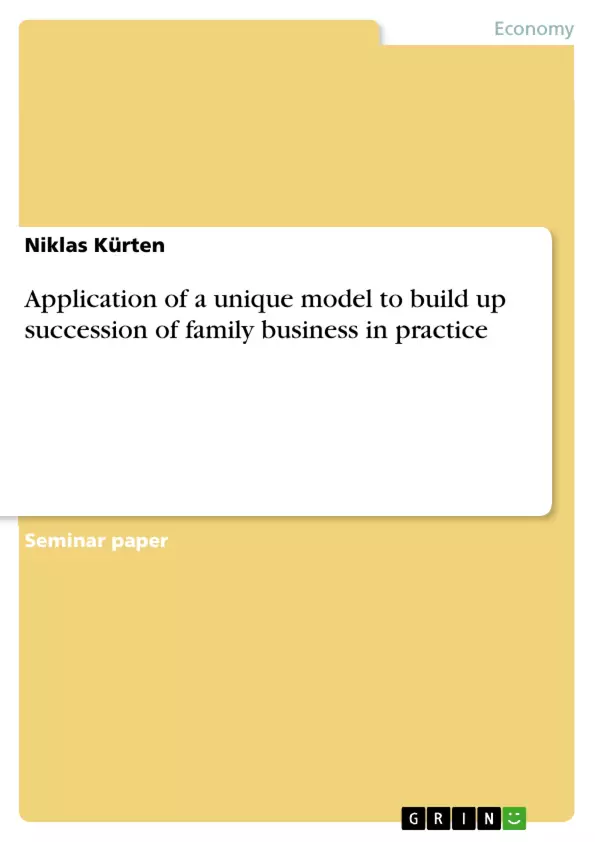Literature generally cites the low survival rate which family businesses face. Only 30 % of the companies further survive into the second generation, even only 15 % to 16 % into the third generation.
Although many researchers see the most potential reason for this within the lack of adequate planning when company-owner hand over their businesses to offsprings or external managers , there exist various further reasons. In general, academics offer within their works a wide range of reasons, internal as well as external caused factors, which strongly influence the success of the succession within family businesses. Further, they developed several models and academic approaches to build up the process of succession and the mentioned different influences within holistic approaches of succession in family businesses to enable companies a successful handing over.
Still, the situation in practice has not changed significantly since the current survival rate is steadily on a further low level. This could consequently reveal the hint of too little interaction between theory and practice respectively between academics and practitioners. Other branches showed the potential and the possible win-situations for both sides.
Therefore, the research objective of this paper is to work out, to what extent a unique theoretical model is able to build up all relevant factors influencing the succession as an integrated process in theory to project this onto family businesses in practice and to provide solutions for succession within these companies.
Inhaltsverzeichnis (Table of Contents)
- Introduction
- Research Objective
- Procedure of Analysis
- A Definition of Successful Succession
- Influences Taking Place in the Succession Process
- The Personal Influences
- Successor Related Factors
- Family Related Factors
- The External Influences
- Connection in the Process
- Regional Related Influences
- Unexpected Influences
- The Personal Influences
- The Importance of Several Influences
- Conclusion
Zielsetzung und Themenschwerpunkte (Objectives and Key Themes)
This paper aims to assess the applicability of a theoretical model to address relevant factors influencing family business succession in practice. The paper seeks to understand the extent to which the model can be effectively integrated into the succession process and provide practical solutions for family businesses.
- Defining successful succession within family businesses
- Identifying and analyzing the key influences on succession, both personal and external
- Examining the role of theoretical models in facilitating a successful handover
- Bridging the gap between theory and practice in the context of family business succession
Zusammenfassung der Kapitel (Chapter Summaries)
The first chapter establishes the research objective and the methodology employed in the study. The low survival rates of family businesses are highlighted, and the need for a comprehensive theoretical model to address succession challenges is emphasized.
Chapter two delves into the definition of successful succession, exploring the multifaceted nature of success and the importance of considering both business and family perspectives. It acknowledges the lack of a universally agreed-upon definition and examines the various aspects of successful succession, including the satisfaction of stakeholders and the long-term viability of the business.
Chapter three examines the key influences on the succession process. Personal influences, such as successor-related and family-related factors, are discussed. The chapter also explores external influences, including regional, process-related, and unexpected factors.
Schlüsselwörter (Keywords)
Family business succession, theoretical model, successful succession, personal influences, external influences, practical solutions, family dynamics, business continuity, stakeholder satisfaction.
- Citar trabajo
- Niklas Kürten (Autor), 2006, Application of a unique model to build up succession of family business in practice, Múnich, GRIN Verlag, https://www.grin.com/document/79060



